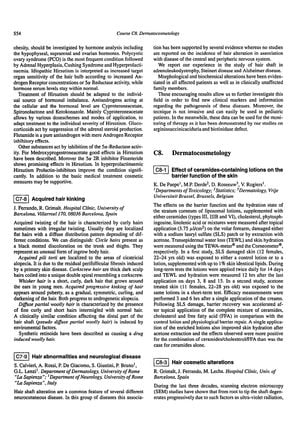Hair Abnormalities and Neurological Disease

TLDR Hair changes could indicate neurological diseases and help monitor treatment.
The document reports on the association between hair shaft alterations and neurocutaneous diseases, specifically mentioning adrenoleukodystrophy, Steinert disease, and Alzheimer disease. Morphological and biochemical changes in the hair shaft were found in all affected patients and even in clinically unaffected family members. These findings suggest that hair shaft analysis could serve as a non-invasive clinical marker and provide insights into the pathogenesis of these diseases. Additionally, the technique could be useful for monitoring therapy, as demonstrated in studies on argininsuccinicaciduria and biotinidase defect. The document emphasizes the potential of hair shaft examination in pediatric patients due to its non-invasive nature.


